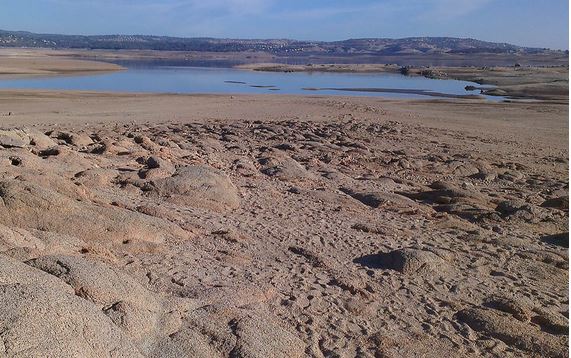Science News
Drought Causes Shifting Landscape
August 25, 2014

By Molly Michelson
Water is a precious resource in the American West, and is becoming more so as the region’s severe drought intensifies. A few weeks ago, we reported on the large groundwater depletion in the West noted by the NASA Gravity Recovery and Climate Experiment (GRACE) satellite. Now, ground-based instruments are confirming this and surface water loss in a surprising way.
In his study of earthquakes, Adrian Borsa, a geophysicist with Scripps Institution of Oceanography, was poring through various data sets on ground positions from highly precise GPS stations across the West when he noticed a pattern between 2003-2014: All of the stations had moved upwards in the years coinciding with the timing of the current drought.
It seems that the loss of of both surface and groundwater weight is causing the region to lift up, like a mattress spring uncoiling.
With Scripps colleagues Duncan Agnew and Dan Cayan, Borsa determined that the current water loss on and just under the surface has caused the landscape to rise some 15 millimeters (more than half an inch) in California’s mountains and an average of four millimeters (0.15 of an inch) across the West (California, Oregon, Washington, Nevada, Idaho, Utah and Nevada). Using GPS data, they estimate the total water deficit to be nearly 240 gigatons (62 trillion gallons of water), equivalent to a six-inch layer of water spread out over the entire western United States.
“These results quantify the amount of water mass lost in the past few years,” says Cayan. “It also represents a powerful new way to track water resources over a very large landscape. We can home in on the Sierra Nevada Mountains and critical California snowpack. These results demonstrate that this technique can be used to study changes in fresh water stocks in other regions around the world, if they have a network of GPS sensors.”
These ground-based data confirm climatological and satellite observations, and serve as a measurable reminder of the need for thoughtful water use and careful regulation.
The study is published this week in Science.
Image: USGS